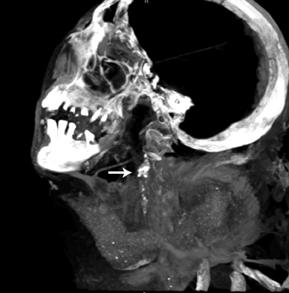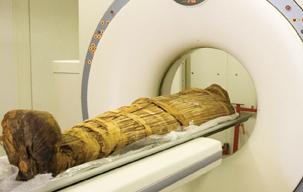
Completed numbers for a dictating radiologist.
As the managers of a diagnostic imaging center, my colleagues and I took it upon ourselves to pay a visit to our U.S. senator in Washington D.C., and express our views on the proposed health care bill. We started the dialogue by posing a basic question to the senator’s legislative correspondent on health care and his staff. We asked, "As a Medicare provider, what are we reimbursed for a chest X-ray?" We explained that the process to secure and report on a chest X-ray involved many steps, including, scanning by our technologist, reading by our radiologist, transcription of the report, distribution of the report via fax, courier or Web portal to the referring physician’s office, and, according to federal law, storage of the X-ray for 10 years? The senator’s staff responded that the fee ranges from $250 to $1,500 per chest X-ray. Next, we asked where each filled his or her car for the most recent gas purchase. They all knew, and many reported choosing the location because the gas was cheaper there than at other stations. We then asked if they would drive to another location if they could save 50 cents on a tank of gas. Many said they would. While these staffers represent a senator who sits on the Senate Finance Committee, they were astounded to learn that Medicare’s reimbursement for a two-view chest X-ray was just $31. What does this have to do with effective use of information technology in radiology? The answer is everything from a workflow perspective. Readily Available Data As our country experiences an economic downturn beyond those endured in the Great Depression and the Financial Panic of 1837, today’s radiology practices must have access to need-to-know performance metrics. Data should be readily available from easy-to-use dashboards to provide a sense of how the practice is doing. Rather than using data from a previous quarter or month, however, the system should provide data from the previous day, or even the previous minute, and enable an administrator to make important operational decisions based upon this information. Access to “real-time” data can have tremendous impact on workflow efficiency and an organization’s bottom line. Manatee Diagnostic Center has relied on data analytics embedded in a radiology information system (RIS) to provide important information on a daily basis. This data allows us to identify and address workflow inefficiencies across our five locations. The center has used Merge’s Fusion RIS/PACS and its practice analysis module since 2004. The system provides numerous options for data mining and interpretation and allows us to achieve efficiencies by centrally operating our facilities. With data being sent to our centralized RIS database, we can access any location’s data from any of our facilities. Data is at our fingertips without needing to be at a specific site. Calculators for Cross-Facility Comparison On a daily basis, staff reviews payment history at each of our locations and calculates income for each modality at each facility. This allows us to identify if a specific location is falling short of its goals, and to implement changes to address the shortfall. We strive to ensure that each entity is financially carrying itself and contributing to the overall profitability of our organization. Our executive team also uses this type of data for government relations activities. By providing our congressional representatives with frontline outpatient radiology data, we believe we are equipping them to make more informed decisions about Medicare payments. Through tangible details, we can show government officials whether or not we’ll be able to keep our doors open for their constituents, including patients, referring physicians, vendors, and others. Is Outsourcing Worth ItClosing Gaps in the Schedule As a customer-driven organization, we must ensure that schedulers and other staff members at our organizations can help referring physicians and patients make convenient, timely arrangements for procedures being requested. With data at our fingertips, we can readily identify openings on the schedule across our various locations. This capability helps schedulers offer patients various options, while also striving to meet the referring doctor’s request. Additionally, our own productivity can be maximized because exam openings are kept to a minimum. When a “no-show” occurs, with the click of a mouse we can identify the patient, the reason the procedure was not completed and if it was rescheduled. Holes in the schedule are readily known across our locations, allowing schedulers to fill spaces with urgent appointments. RIS-extracted data provides a snapshot of patients who were added on the books as walk-ins and identifies the referring physician. With immediate access to data, we can also give referring physicians up-to-the-minute details about the status of their patients. Rather than calling us, physician offices can log into our Web portal and see if a patient is checked in, if the exam is in progress, if the report is awaiting dictation, or if the exam is complete. This type of information is necessary to foster quality relationships with referring practices, a critically important variable for survival in today’s economic climate. Marketing Data at the Ready Many radiology practices evaluate a previous quarter’s data to make important strategic decisions about an upcoming quarter or year, including decisions about marketing tactics. Our RIS-based practice analysis module gives us all the marketing data we need, not just for a previous quarter but also for the previous day or the last five minutes. We regularly provide details to our marketers in the field, including referral activity by physician, referral activity for a particular zip code or volume by physician (or by zip code) at each of our locations. We can readily gather important demographic information, such as age ranges for the populations we serve, gender, what weekdays are the busiest, and which specialty refers us the most patients. This data can be enhanced by pairing it with census data to correctly determine the percent of the population we are seeing at our facilities. Informed decisions can be made when considering expansion, targeting direct mail, purchasing advertising, and the like. As radiology organizations weather our nation’s economic storms, we also weather uncertainty of pending sustainable growth rate (SGR) formulas. Executives in imaging facilities must know today what they will be receiving today in reimbursements, in order to prepare for projected delays and reductions in government reimbursement. We also must know what expenditures are required to keep our doors open. While macro-level data is important, micro-level data provided in real-time can allow organizations to be nimble and make important changes. These changes can not only have an immediate impact in optimizing efficiency for cost containment, they also can contribute to improvements in quality and customer satisfaction. Author: Davis W. Graham is executive director/CFO of Bradenton, Florida-based Manatee Diagnostic Center. www.manateediagnostic.com. He welcomes comments at [email protected].





 November 29, 2025
November 29, 2025 









